7-Zip
7-Zip is an open source Windows utility for manipulating archives. We measure the Total Rating performance using the built-in benchmark tool. The test stresses all CPU cores to 100% and shows an affinity for memory bandwidth.
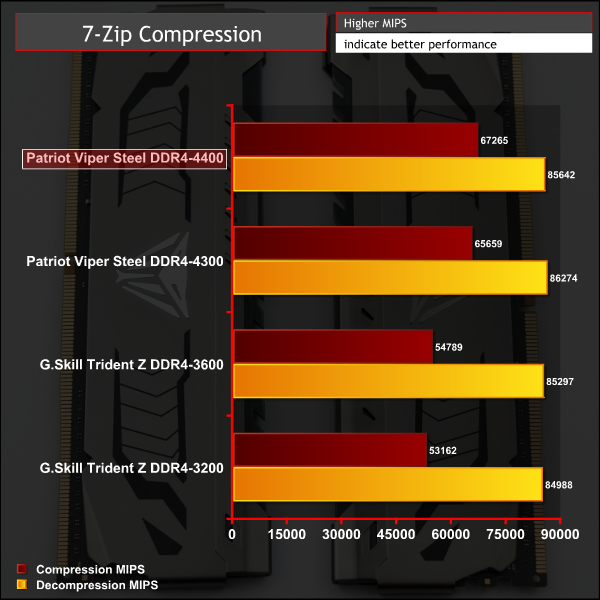
The 7Zip test scales well in terms of compression to the faster memory frequencies, the gap between 3600MHz and 4300/4400MHz is as large as you would expect.
Cinebench R15
Cinebench is an application which renders a photorealistic 3D scene to benchmark a computer’s rendering performance, on one CPU core, all CPU cores or using the GPU. We run the test using the all core CPU mode.
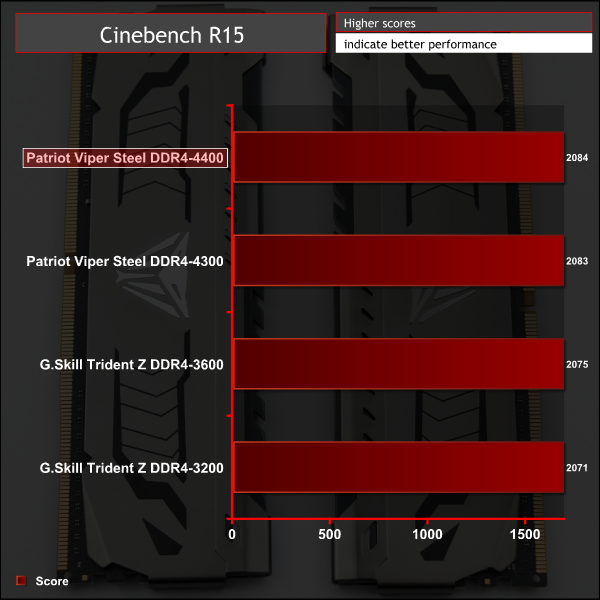
Cinebench R20
Improvements to Cinebench Release 20 reflect the overall advancements to CPU and rendering technology in recent years, providing a more accurate measurement of Cinema 4D's ability to take advantage of multiple CPU cores and modern processor features available to the average user.
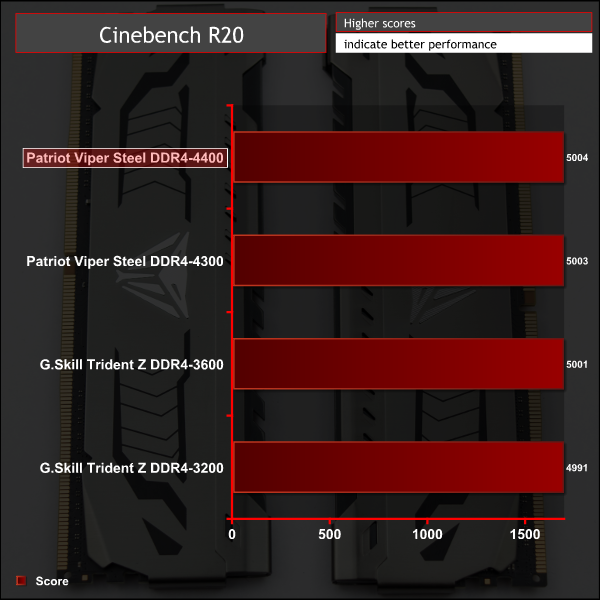
Both iterations of Cinebench have virtually no difference between them when comparing 3,200 and 4400MHz frequencies.
AIDA64 Engineer
AIDA64 Engineer is a multi-featured software suite for diagnostics, stress testing, benchmarking, software auditing and various other measurement parameters. We use AIDA64 Engineer to benchmark memory throughput and latency.
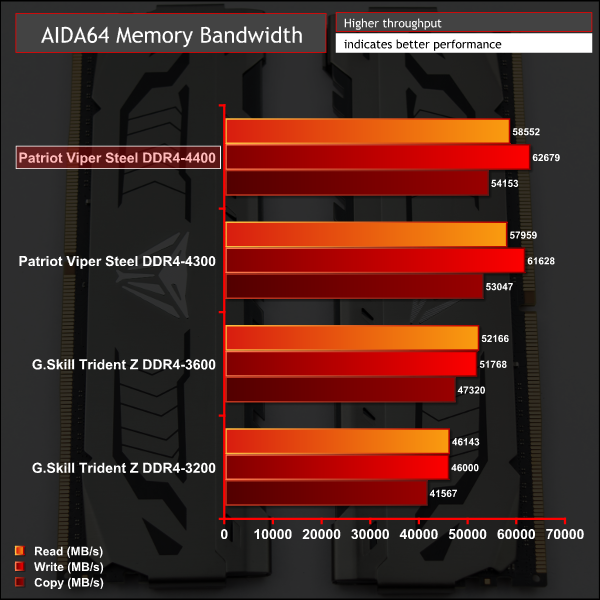
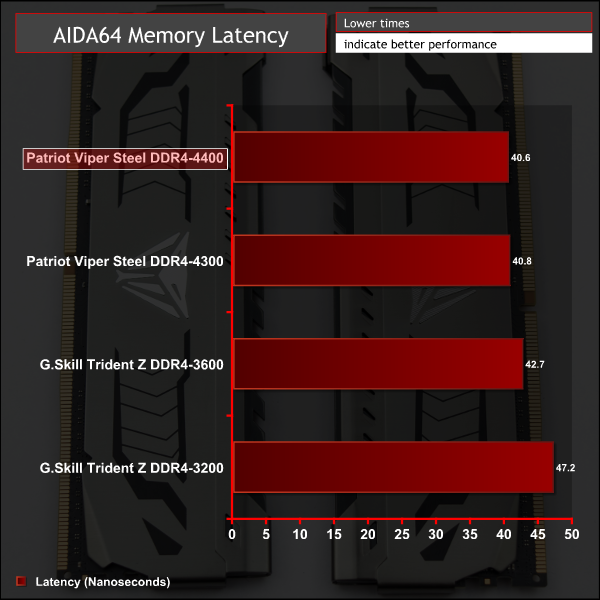
AIDA64 scales neatly, as a synthetic benchmark, but even here the jump in performance between 3,200MHz and 3,600MHz is almost the same as the jump between 3,600MHz to 4,400MHz, despite the frequency gap being half the size. As always, diminishing returns with high-speed memory is something be aware of.
Sandra Memory Bandwidth
SiSoft Sandra 2018 is a multi-function utility program that supports remote analysis, benchmarking and diagnostic features for PCs, servers, mobile devices and networks. We use the SiSoft Sandra memory bandwidth test to provide a set of memory bandwidth results.
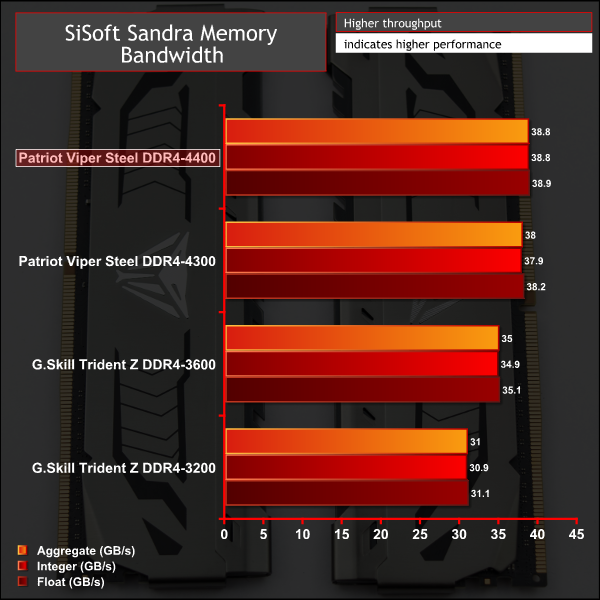
SiSoft Sandra shows similar results to AIDA64's memory test.
3DMark
3DMark is a multi-platform hardware benchmark designed to test varying resolutions and detail levels of 3D gaming performance. We run the Windows platform test and in particular the Time Spy benchmark, which is indicative of high-end 1440p PC Gaming.
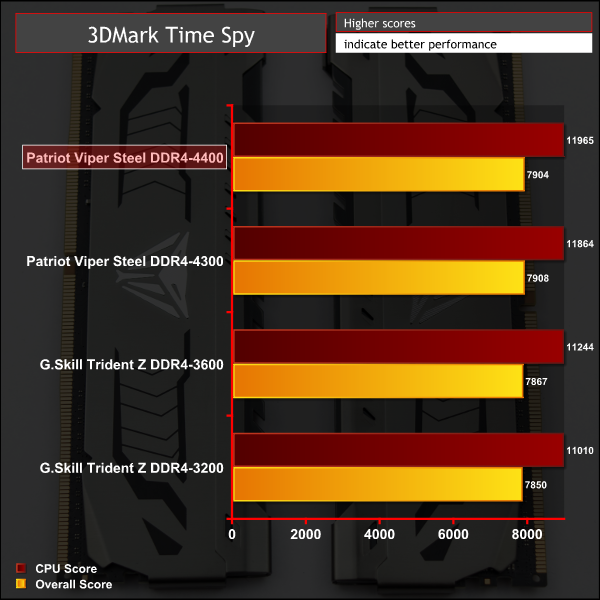
How does all that extra investment in high-speed memory translate into gaming potential? Unsurprisingly, the gains are fairly limited but the higher speed memory will enhance CPU performance and subsequently improve gaming performance in some CPU-bound titles. If increasing gaming performance and FPS were your primary concern then extra budget for an improved graphics card would be a better investment.
System Power Consumption
We leave the system to idle on the Windows 10 desktop for 10 minutes before taking a reading. For CPU load results we run AIDA64 CPU, FPU, Cache and Memory stress tests and take a reading after 10 minutes. The power consumption of our entire test system (at the wall) is shown in the chart.
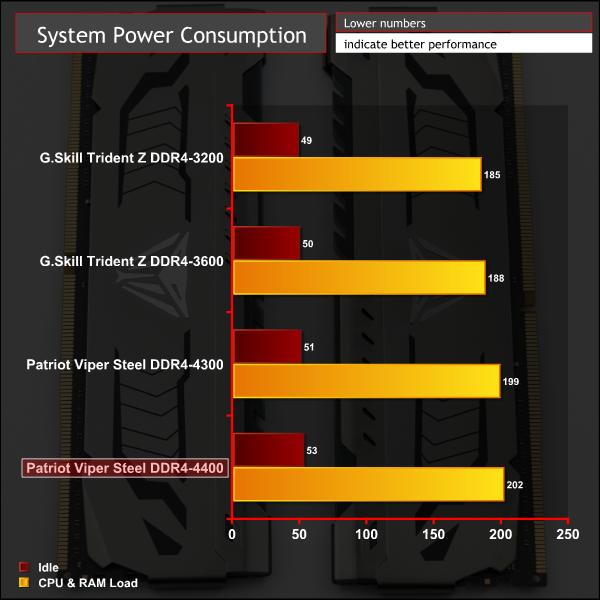
The memory itself drives up system power consumption as the frequency goes higher, but most of that is an indirect increase in power consumption. To hold the memory stable at such high frequencies most motherboard vendors, including MSI with the Z390 MEG ACE, generously boost specific voltages such as VCCSA and VCCIO.
The combination of an increase in CPU voltages to aid stability, and the higher 1.45v for the DRAM, results in higher overall system power consumption. For stability we used the following voltage configurations when testing the Patriot Viper kit:
- DDR4-4400MHz – 1.5v DRAM, 1.45v VCCSA, 1.4v VCCIO
- DDR4-4300MHz – 1.45v DRAM, 1.4v VCCSA, 1.35v VCCIO
That's not to say that lower voltages were not possible for the system, but it will be down to individual preferences, tweaking time and capability to see how low those voltages can be brought down.
Both the G.Skill kits used 1.35v for the DRAM and auto system voltages for VCCSA and VCCIO that were not that much higher than “normal” VCCSA and VCCIO levels, around 1.25-1.3v VCCSA and 1.2-1.25 VCCIO. Results vary between motherboard vendors depending on the voracity of the Intel Turbo profile enhancement.
Unfortunately it was not possible to achieve the next frequency, 4,500MHz, with overclocking.
Be sure to check out our sponsors store EKWB here
 KitGuru KitGuru.net – Tech News | Hardware News | Hardware Reviews | IOS | Mobile | Gaming | Graphics Cards
KitGuru KitGuru.net – Tech News | Hardware News | Hardware Reviews | IOS | Mobile | Gaming | Graphics Cards


